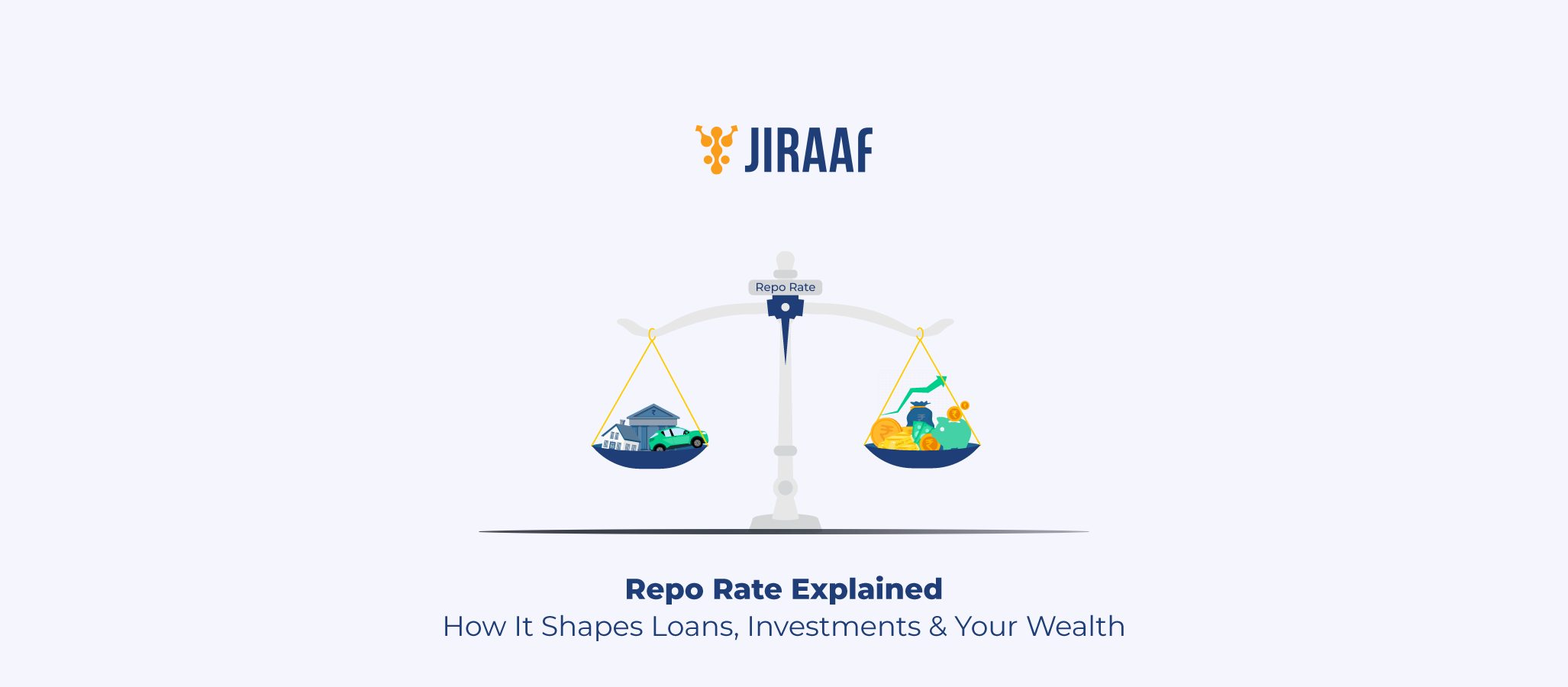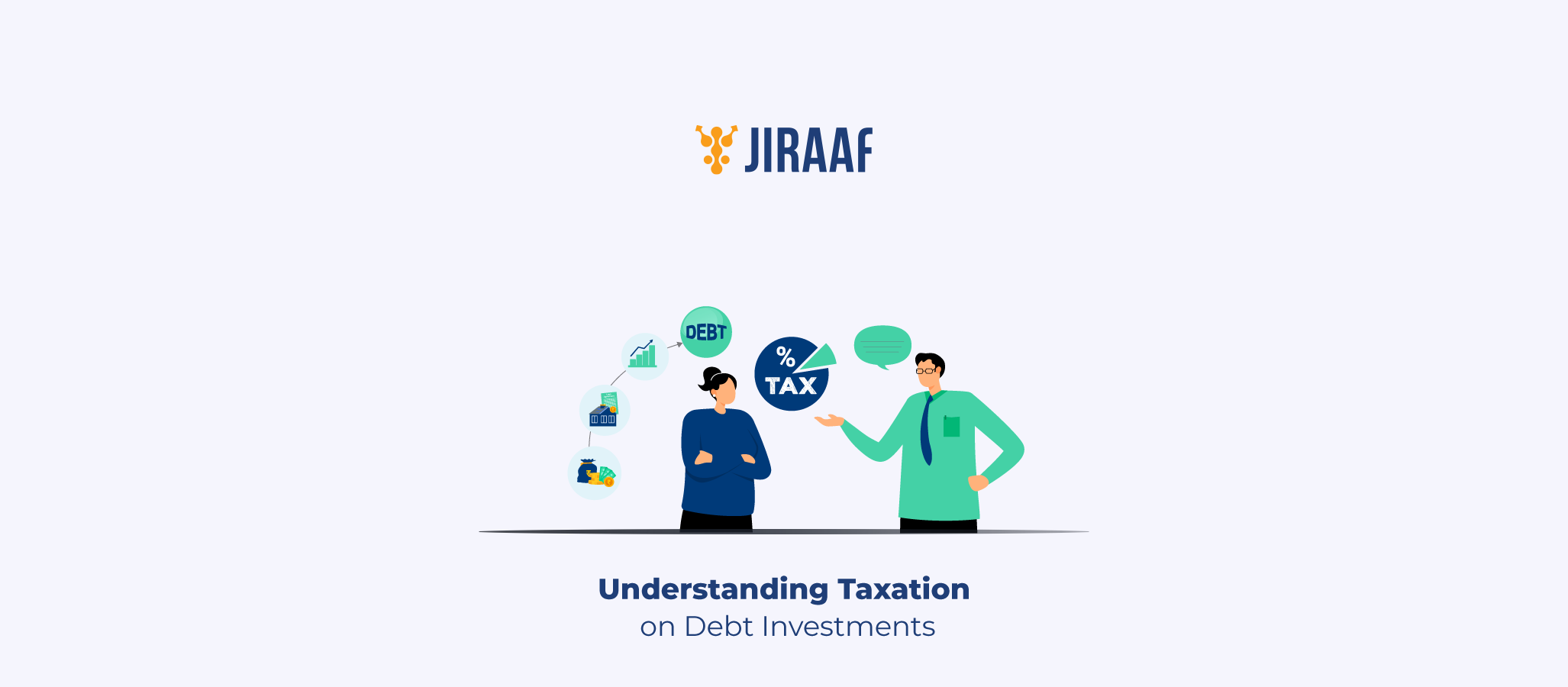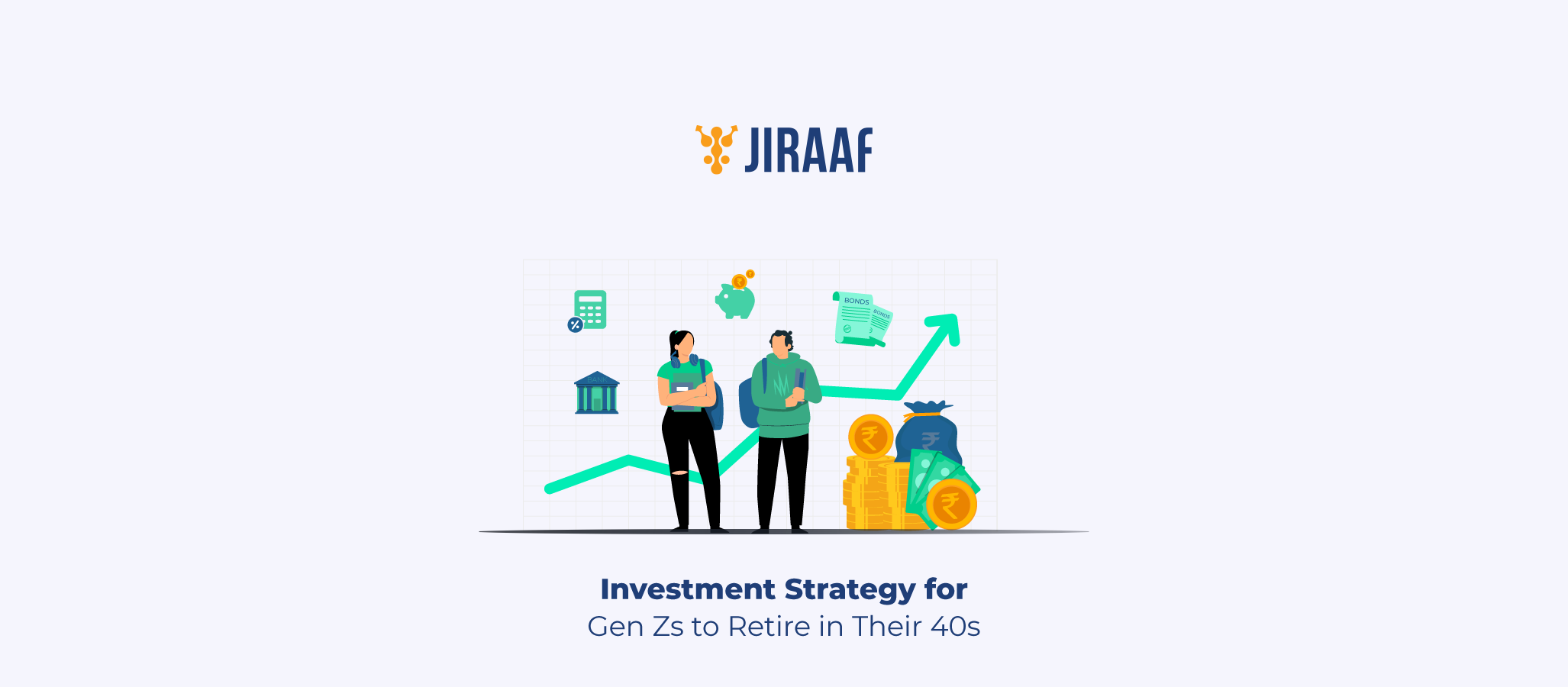Hitting your 50s can feel like standing at a financial crossroads. On one hand, you’re likely at your peak earning potential, possibly debt-free, and thinking about life after work. On the other hand, retirement isn’t far off, and the pressure to ensure financial security intensifies. Are you saving enough to retire comfortably? Have you built a resilient investment portfolio that will generate steady income? These are crucial questions middle-aged investors must address.
With rising inflation, increased life expectancy, and evolving financial instruments, traditional retirement strategies—such as solely relying on fixed deposits or pension plans—may no longer be sufficient. This is where diversification becomes key, and corporate bonds emerge as a crucial player in the financial stability game. But before we get to investment strategies, let’s evaluate your current financial standing.
Financial Check-Up: Assessing Where You Stand
Before planning your next move, it’s essential to assess your current financial health. Taking a comprehensive look at your savings, investments, and financial security will help you determine if you’re on track for a stable and comfortable retirement. Here’s a checklist to guide you through this process:
1. Have You Defined Your Retirement Goal?
Your retirement corpus depends on your lifestyle aspirations, anticipated expenses, and potential medical needs. A common rule of thumb is the 25x Rule—you should have at least 25 times your annual expenses saved to sustain a 30-year retirement.
For example, if your expected annual expenses post-retirement are ₹10 lakh, your target retirement corpus should be at least ₹2.5 crore. This amount should also factor in inflation, healthcare costs, and evolving lifestyle needs.
2. How Much Have You Saved So Far?
A general benchmark for middle-aged investors is to have at least 6-8 times your annual salary saved by your 50s. If you earn ₹20 lakh per year, you should ideally have at least ₹1.2-1.6 crore in savings and investments.
However, many investors find themselves behind this target. If that’s you, don’t panic—there’s still time to ramp up savings, optimize your portfolio for higher returns, and implement a strategic investment approach.
3. Are Your Investments Diversified?
Relying solely on fixed deposits, public provident funds (PPF), or employer-provided pension schemes may not provide the optimal mix of growth and stability. Diversifying into corporate bonds, annuities, and other fixed-income instruments can enhance portfolio resilience while ensuring steady returns.
- If most of your money is parked in FDs, consider shifting a portion into higher-yield corporate bonds to enhance returns without taking excessive risk.
- If you have excessive exposure to equities, gradually shift some investments into safer, income-generating instruments to reduce volatility risk.
- A well-balanced portfolio should have a mix of stocks for growth, bonds for stability, and real assets for diversification.
4. Do You Have a Passive Income Strategy?
At this stage, financial planning should focus on income generation rather than just accumulation. Investments that generate consistent cash flow—like corporate bonds, rental income, or systematic withdrawal plans (SWPs)—can create a financial buffer for retirement.
- Corporate Bond Laddering: A strategy where you invest in bonds with staggered maturities to ensure a steady income stream.
- Rental Income: If you own property in a high-demand area, rental earnings can provide additional financial security.
- SWPs from Mutual Funds: This allows you to withdraw a fixed amount regularly while keeping the rest invested for potential growth.
5. Have You Accounted for Inflation and Healthcare Costs?
Inflation erodes purchasing power over time, and a corpus that seems sufficient today may fall short two decades later. Similarly, medical costs tend to rise exponentially with age. Ensuring adequate health insurance and a dedicated medical emergency fund is crucial.
- A health insurance policy with a high sum insured (₹25-50 lakh) is advisable to cover unforeseen medical expenses.
- Consider long-term care planning, such as provisions for assisted living or home healthcare, to safeguard against future uncertainties.
- Inflation-proofing your investments by allocating funds to fixed-income instruments with inflation-adjusted returns can help preserve wealth.
6. Financial Health Checklist: Are You on Track?
Before moving forward with your financial strategy, take a moment to assess your readiness:
- Emergency Fund: Do you have at least 6-12 months of living expenses saved in a liquid account?
- Debt Check: Are you free from high-interest loans, or do you have a clear repayment plan?
- Retirement Savings: Are you on track with your retirement corpus? (Check against your target FIRE number or a retirement calculator.)
- Investment Allocation: Is your portfolio diversified between equity, bonds, fixed deposits, and real assets?
- Passive Income Streams: Do you have enough sources of steady, low-risk income to support your future lifestyle?
- Insurance Coverage: Are your health and life insurance policies adequate for unexpected events?
- Will & Estate Planning: Have you drafted or updated your will and nominee details for key financial assets?
If you find gaps in any of these areas, now is the time to make adjustments. The earlier you address these issues, the smoother your financial journey in your 50s and beyond!
Smart Investment Strategies for Middle-Aged Investors
Once you’ve assessed your financial standing, it’s time to refine your investment approach. The right strategy should balance growth, income, and risk management while ensuring financial stability as you approach retirement.
1. Reduce Risk, but Keep Growing
Your 20s and 30s were about aggressive wealth accumulation, but your 50s should focus on capital preservation with steady growth. You still need returns that outpace inflation, but without excessive risk exposure.
- Shift from aggressive equities to a balanced portfolio. Instead of a 70-80% equity allocation, consider reducing it to 35-45%, gradually increasing exposure to fixed-income assets like bonds.
- Prioritize stability with debt instruments. Bonds, especially AAA-rated corporate bonds, provide a reliable income stream while protecting capital.
- Consider hybrid mutual funds. These funds offer a mix of equity and debt, helping you balance risk and returns effectively.
2. The Role of Corporate Bonds in Your Portfolio
Corporate bonds are a powerful alternative to traditional FDs and volatile stocks. They offer better interest rates than bank deposits and are relatively safer than equities.
Why Corporate Bonds?
- Higher Returns than FDs – While mainstream fixed deposits in India offer 5.5-7.5% annual returns, corporate bonds can provide 8-13.5%, depending on the issuer’s credit rating.
- Predictable Income Stream – Bonds pay fixed interest at regular intervals, making them ideal for retirees looking for passive income.
- Lower Risk than Stocks – Unlike equities, corporate bonds provide stable returns without market volatility.
- Diverse Options – From AAA-rated bonds (lower risk, moderate returns) to high-yield bonds (higher risk, better returns), investors can choose based on their risk appetite.
3. How to Invest in Corporate Bonds
Earlier, corporate bonds were accessible only to institutional investors, but online bond platforms have changed the game. Today, retail investors can buy bonds just as easily as stocks.
- Choose a good SEBI-registered platform for safety and transparency.
- Compare yields and credit ratings before selecting bonds.
- Ladder your bond investments by buying bonds with staggered maturities to ensure a steady income stream over time.
4. Don’t Ignore Real Estate—But Be Strategic
Real estate can be a solid asset, but it’s not always liquid. If you own property, consider its role in your retirement plan:
- Rental Income – A well-located rental property can provide a steady stream of passive income.
- Reverse Mortgage – If you’re asset-rich but cash-poor, a reverse mortgage allows you to unlock the value of your property while continuing to live in it.
- Downsizing – Selling a larger home and moving into a smaller one can free up funds for investment.
5. The Importance of a Diversified Passive Income Strategy
Beyond bonds and real estate, other passive income sources include:
- Monthly Income Plans (MIPs) from mutual funds – These generate regular income with some equity exposure.
- Systematic Withdrawal Plans (SWPs) – Allow structured withdrawals from mutual fund investments.
A Sample Investment Portfolio for a 50-Year-Old
Given the current stock market volatility, it’s important to maintain a balanced approach—ensuring adequate equity exposure for long-term growth while allocating to stable fixed-income options like corporate bonds for steady returns. Here’s a suggested portfolio:
| Asset Class | Revised Allocation | Purpose |
| Corporate Bonds | 35% | Stable returns & passive income |
| Equity Mutual Funds/Blue-Chip Stocks | 25% | Inflation-beating growth |
| Balanced Mutual Funds (Equity-Debt Mix) | 10% | Moderate growth with lower risk |
| Fixed Deposits | 10% | Liquidity & emergency fund |
| Real Estate (Rental Income) | 10% | Secondary income source |
| Gold/Debt Funds | 10% | Hedge against volatility |
This diversified approach ensures steady income, inflation protection, and risk mitigation, striking the right balance between growth and stability for retirement planning. The allocation to equity mutual funds supports long-term wealth creation, while corporate bonds and fixed-income instruments provide predictable, tax-efficient income and financial security.
Safeguarding Your Retirement: Inflation, Taxes, and Unexpected Costs
Even with a well-structured investment plan, financial risks persist. Middle-aged investors must proactively address inflation, taxes, and unforeseen expenses to ensure their retirement savings remain intact.
1. Inflation-Proofing Your Retirement Corpus
Inflation gradually erodes purchasing power, meaning that a seemingly adequate retirement corpus today may not be sufficient in the future. To counter this:
- Invest in inflation-resistant assets. Corporate bonds, equity mutual funds, and inflation-linked bonds can generate returns that keep pace with rising costs.
- Maintain moderate equity exposure. While equities carry some risk, a 30-35% allocation can provide long-term growth, helping to offset inflation’s impact.
- Delay withdrawals when possible. The longer your investments remain untouched, the greater their growth potential, ensuring they better withstand inflation over time.
2. Tax Planning to Maximize Retirement Income
Effective tax planning can significantly enhance your post-retirement income by minimizing tax liabilities:
- Utilize tax-free bonds. Government-backed tax-free bonds allow you to earn interest without tax deductions, making them a smart investment for retirees.
- Utilize the LTCG exemption on listed bonds. Long-term capital gains on listed bonds (held for more than 24 months) are taxed at a concessional 12.5% rate (plus applicable surcharge and cess). Additionally, the first ₹1.25 lakh of LTCG in a financial year is exempt from tax, providing a useful tax-saving opportunity.
- Opt for tax-efficient withdrawals. Instead of withdrawing large lump sums, use Systematic Withdrawal Plans (SWPs) to spread tax liabilities across multiple years, keeping taxable income lower.
3. Preparing for Healthcare and Emergencies
Medical expenses often become one of the largest financial burdens in retirement. A strategic approach to healthcare planning can prevent these costs from derailing your financial security:
- Secure adequate health insurance. A policy with a sum insured of ₹25-50 lakh ensures protection against major medical expenses.
- Build a dedicated healthcare fund. Setting aside ₹10-20 lakh for medical contingencies provides an additional safety net.
- Consider critical illness insurance. Policies covering severe conditions like cancer or heart disease help reduce out-of-pocket healthcare costs.
By proactively addressing inflation, taxes, and medical costs, retirees can safeguard their wealth and enjoy financial security throughout their golden years.
Final Steps: Ensuring a Stress-Free, Financially Independent Retirement
You’ve built a diversified portfolio, accounted for inflation and taxes, and safeguarded against unexpected expenses. Now, it’s time for the final touches to secure a financially independent and stress-free retirement.
1. Setting up a Sustainable Withdrawal Strategy
Your retirement savings should last for 20-30 years post-retirement. A well-structured withdrawal strategy prevents you from outliving your corpus.
- Follow the 4% rule. This guideline suggests withdrawing 4% of your corpus annually, adjusting for inflation, to maintain financial stability.
- Prioritize fixed-income sources first. Use interest from corporate bonds, rental income, and annuities before selling growth assets.
- Adjust withdrawals based on market conditions. In a market downturn, rely on bonds and cash reserves instead of selling equity investments at a loss.
2. Estate Planning: Securing Your Legacy
A well-structured estate plan ensures a seamless transfer of wealth to your loved ones.
- Draft a detailed will to clearly outline asset distribution and avoid disputes.
- Consider setting up a trust to ensure efficient wealth transfer and asset protection.
- Nominate beneficiaries for all financial accounts to simplify the inheritance process and prevent legal complications.
3. Staying Financially Independent for Life
Retirement isn’t just about financial planning—it’s about staying in control of your finances and maintaining financial independence.
- Review your portfolio annually. Make necessary adjustments based on inflation, market performance, and personal financial needs.
- Avoid excessive gifting to family. While supporting loved ones is important, ensure it doesn’t compromise your own financial security.
- Stay active and engaged. Many retirees explore consulting, freelancing, or part-time work to supplement income and stay mentally sharp.
Avoid These Costly Retirement Planning Mistakes
Even with the best intentions, certain financial missteps can jeopardize your retirement security. Awareness of these pitfalls can help you make informed decisions and safeguard your future. Here are some of the most common mistakes middle-aged investors should avoid:
1. Underestimating Inflation
Many retirees assume a lump sum—say ₹1 crore—will last a lifetime. However, inflation steadily erodes purchasing power. What seems like a comfortable corpus today may fall short in two decades.
Solution: Invest in assets that outpace inflation, such as corporate bonds, inflation-linked bonds, and equity mutual funds.
2. Relying Solely on Equity
While equities offer long-term growth, market downturns can severely impact a retirement portfolio. A sudden stock market crash can significantly reduce savings, forcing retirees to sell assets at a loss.
Solution: Maintain a balanced portfolio by diversifying into fixed-income instruments like corporate bonds, tax-free bonds, and annuities to ensure stability.
3. Overlooking Tax-Efficient Investments
Failing to optimize tax planning can lead to higher-than-expected tax outflows, reducing net returns. Investments with high tax liabilities can erode savings faster than anticipated.
Solution: Consider tax-efficient options such as tax-free bonds, long-term capital gains, and Systematic Withdrawal Plans (SWPs) to manage tax liabilities effectively.
4. Ignoring Passive Income Sources like Corporate Bonds
Many investors focus solely on stocks or fixed deposits while overlooking corporate bonds, which offer a steady stream of high-yield income.
Solution: Allocate a portion of your portfolio to AAA-rated and high-yield corporate bonds to secure predictable cash flows and reduce reliance on volatile equity markets.
5. Delaying Financial Planning
The later you start saving and investing, the more difficult it becomes to build a robust retirement corpus. Many middle-aged investors realize too late that they need to take more risk or save aggressively to meet their goals.
Solution: Start planning early, even in your 30s or 40s, to take advantage of compounding. If you’re starting late, prioritize high-yield fixed-income options to create a reliable retirement income.
By proactively addressing these common retirement planning mistakes, you can build a resilient financial future.
Final Thoughts
Your 50s are the last chance to ensure a secure, worry-free retirement. With the right investment mix—corporate bonds, equities, real estate, and fixed-income instruments—you can enjoy financial independence well into your golden years.
The key is acting now. Whether it’s diversifying your portfolio, minimizing risks, or leveraging online platforms for corporate bond investments, every step you take today brings you closer to a financially secure future.
Are you on track for a worry-free retirement? If not, now’s the time to make the right financial moves!
Discover fixed income investments with Jiraaf, a SEBI registered online bonds platform that educates and brings access to a wide array of bonds. Sign up today to explore diversified fixed income investment opportunities to support your goal-based wealth creation journey. Start investing!




